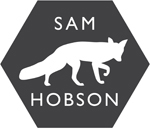I was recently commissioned by National Geographic to shoot a rather unusual model after dark on the streets of London...
To launch BIG CAT WEEK in the UK, Nat Geo WILD had a fully animatronic leopard built by John Nolan Studio and I had one night to photograph it in iconic London locations. The idea was inspired by Nat Geo Wild TV episode Mission Critical: Leopards at the Door. Wild leopards roam the streets of Mumbai but the people who live in the city and the leopards have found a way to coexist. There are of course occasional conflicts, but Mumbai is a great example of how people and wildlife can share urban areas - even if that wildlife is a big cat or other top predator. Read the full story here: Learning to Live with Leopards.
As it was such a complicated build, the leopard wasn't fully finished and operational until the night before the press release, so we had to work through the night to create a set of publicity images ready to go to press in the morning. Assisted by the talented Josh Perrett, we spent the night driving "Lily" all over the city, from Brick Lane, to the Gherkin and Tower Bridge. We got some pretty funny looks and had a great time watching people's reactions to seeing a life-size and incredibly realistic leopard on the streets of London. The story was picked up by a few major news outlets and with the accompanying tv programmes will hopefully help to raise awareness of the threats facing leopards and other big cats in the wild.
INTERVIEW: BBC Radio 2 - The Radio 2 Arts Show with Jonathan Ross
As mentioned in my previous post, I was recently interviewed by Jonathan Ross on BBC Radio 2 - the most popular national radio station in the UK. I was pretty excited to get the opportunity to spread the word about my wildlife photography and promote the Wildlife Photographer of the Year competition to such a wide audience. You can listen to the full interview below...








































